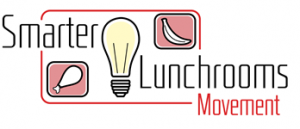Smart Lunch Rooms- Making Lunch Time Smarter!!
Find out more about this program:
Smarter Lunchrooms: Using Behavioral Economics to Improve Meal Selection
See more at: http://www.choicesmagazine.org/magazine/article.php?article=87#sthash.ey06YFFW.dpuf
Information from Just, David R. and Brian Wansink (2009), Cornell University
Obesity rates among children are rising, and school lunch programs are often to blame. However, school lunch programs must maintain a balance between popular, appealing foods and healthier foods while still remaining financially solvent. Economists and psychologists have been using behavioral economics to improve school lunchrooms with minimal effort.
At LPS, we are utilizing behavioral economics, to target the behavioral triggers that lead to the selection and consumption of healthier foods and healthier quantities of foods. Two key principles that school lunchrooms can utilize are reactance and self–attribution. Reactance implies that when people feel coerced into doing something, such as abstaining from an unhealthy food, they will rebel and seek out that unhealthy food outside of the lunchroom.
For example, if children are presented healthy and unhealthy foods but subtly steered towards the healthier choices, they are more likely to make healthier choices in the future because they do not feel coerced into choosing those healthier foods. Behavioral economics has proven successful in several lunchrooms; for example, closing the lid on a freezer that contains ice cream reduces the number of people choosing ice cream from 30% to 14%.
Moving salad bars and fruit closer to students’ reach increased both sales and consumption. Providing a choice between vegetables rather than forcing one on junior high school students also increased consumption. We found the most successful behavioral economics intervention to be requiring high school students to pay cash only to purchase unhealthy foods and drinks. These modifications are just a few examples of how behavioral economics can be used to encourage kids not only to buy healthier foods, but to want to buy them and thus, actually consume them.
LPS is focusing on promoting milk and vegetables to see if children will take and consume more of these healthy foods.

